
Imposing but built on one of the more narrow paths of the cemetery, the mausoleum for the Familias de Francisco de Atucha y Azcuénaga y de Saturnino Sarasa is notoriously difficult to photograph. Even more difficult to see is the beautiful stained glass window inside… but it’s worth the effort:
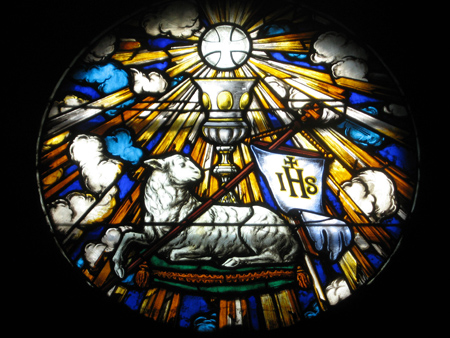
At the beginning of the 20th century, Jorge Atucha purchased some 35,000 hectares from the Duggan family. The estate, located on the northern border of the Provincia de Buenos Aires, took the name “El Pelado“—perhaps Jorge was balding at the time! (confirmed in the comments below)—& soon became a thriving cattle ranch. The family’s fortune grew when a branch of the Urquiza train line arrived to the estate in 1913 & carried its products to the capital. The station was named Sarasa after the last name of Jorge’s mother.
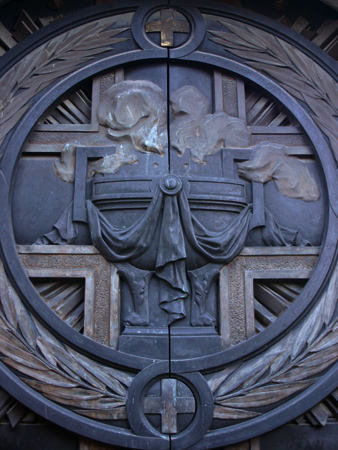
As the estate grew, so did the number of people needed to work it. By 1925, a small town began to emerge in order to provide services to estate workers. Unfortunately “El Pelado” did not survive the political & economic crisis following the departure of Perón. In later years, the last military dictatorship stopped train service, & the town currently has a population of under 100 people.
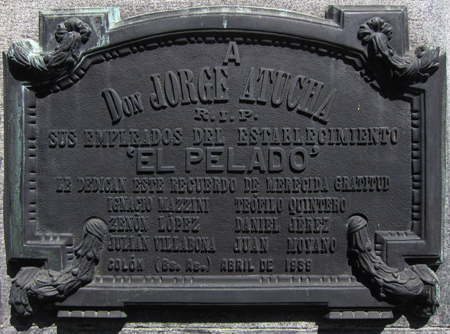
But the estate is still recognized as one of the oldest & best breeders of thoroughbred race horses in the nation. And in spite of fortunes that come & go, the Atucha family obviously did very well for themselves. Their tomb was designed by French architect René Sergent, although he never visited Buenos Aires. The beautifully crafted door & crowning angels would certainly draw much more attention if this tomb had been built on a main walkway.
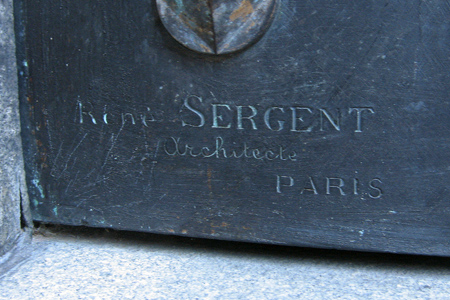
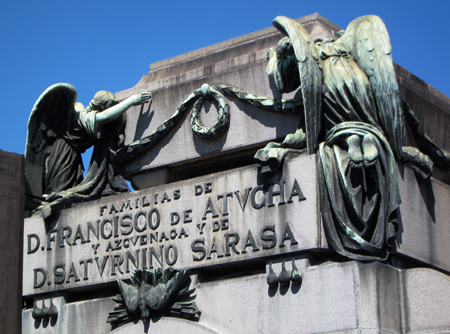
When the Atuchas spent time in Buenos Aires, their residence was located near Recoleta Cemetery on chic Avenida Alvear… just opposite the Palacio Ortiz Basualdo. Sold long ago, the house was divided into several apartments & contains one of the few faux, painted façades in Buenos Aires & is easily visible from busy Avenida 9 de Julio.
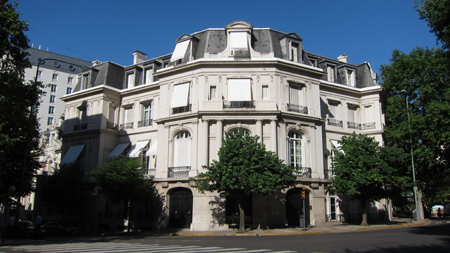
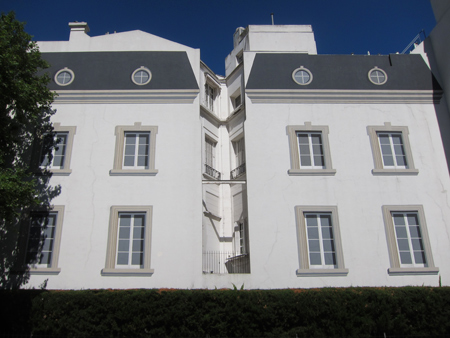
Hi Robert, long time no seeing or writing in our case, “El Pelado” might also have a different meaning, it’s refered to a place where there is nothing, maybe, and just maybe (and I think this because my family has a country house and some of my brother’s friends talk like that) that could mean the aerea was mainly open, no trees, lagoon, lake, plants… nothing around, that might explain the name but that’s only a theory, who knows!
Thanks, Juan! Makes perfect sense! Hope you are well.
querido Juan.
En este caso “EL Pelao” corresponde aun a inmensa finca que Jorge Atucha compró y puso en funcionamiento , principalmente para la cria de caballos, que era su pasion, en la localidade de SARASA (apellido de su madre) y situadad en el NORTE de la provincia de Buenos Aires , ya cerca de la de Santa Fe. La finca se llamó asi porque en la época de la compra por Jorge Atucha comenzó a quedarse pelao (“calvo” decimos en España) y su amigo le pusieron a él este mote.
Esto lo se de primera mano, ya que mi abuela materna , Pilar Oliveros , emigró con 13 años en 1901 a BB.SS. y entro a trabajar con la madre de Jorge Atucha (la Sra, Lavallol) y ambas pasaban temporadas en “el Pelao”. Mas tarde , muerta su patrona quedó como Gobernanta del servicio domestico de la casa de Jorge Atucha. Así hasta el 1920 que regresó a España y se casó. Siempre tuvo un gran añoranza de BB.AA. que conoció y de la gran familia Atucha que de veras la apreció, Siempre nos hablaba con palabras que en España casi ni se usaban como, per ejemplo “guarango” (grosero), “remedios” (medicinas) , “anteojos” (gafas), etc
Hola Eduardo – Muchísimas gracias por el comentario… siempre pensaba que era así y ya me confirmaste. Voy a traducir tu texto a inglés para que todos se enteren. Un abrazo!
Below is a translation of Eduardo’s comment above:
Dear Juan
In this case “El Pelao” refers to an immense estate that Jorge Atucha bought & got running, mainly for raising horses (which was his passion) in the town of Sarasa (his mother’s last name) & located in the northern part of the Province of Buenos Aires close to Santa Fe. The estate took its name from the fact that at the time of purchase Jorge Atucha began to lose his hair (go bald) & a friend of his gave him that nickname.
I know this first hand since my maternal grandmother, Pilar Oliveros, emigrated in 1901 at the age of 13 to Buenos Aires & worked with Jorge Atucha’s mother (Mrs. Lavallol), both of them passing time at “El Pelao”. Much later, when her patron passed away, Pilar stayed as the Governess or the head of domestic staff for the house of Jorge Atucha. She stayed there until 1920, then returned to Spain & got married. She always missed Buenos Aires a lot as well as the remarkable Atucha family that truly appreciated her. She always used words that in Spain have fallen out of use, for example “guarango” (rude), “remedios” (medicine), “anteojos” (glasses), etc.